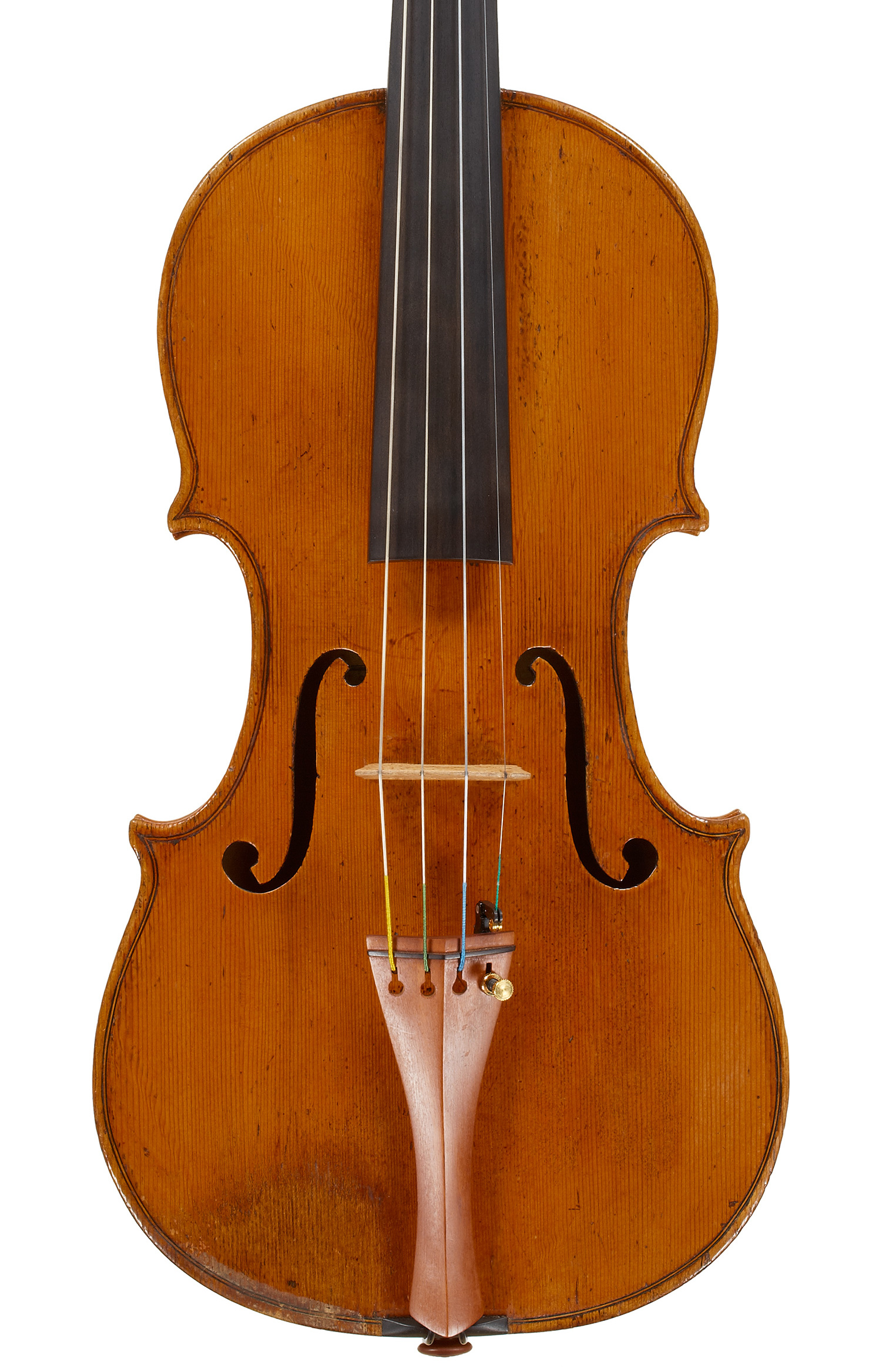The violin presented here was made in Modena in 1807 by Angelo Soliani. The city of Modena enjoyed a rich and illustrious musical heritage from the Renaissance into the 19th century under the patronage of the ruling Este family, yet perhaps because of the city’s close proximity to the famous centers of instrument making in Brescia and Cremona, its luthiers have been overshadowed. Like many similar Italian cities, its violin making past is sporadic yet punctuated by gems.

Violin by Angelo Soliani, Modena, 1807. Photo: Tarisio
The earliest Modenese violin maker of note was Antonio Casini. He was instrument maker to the ducal court in the late-17th century, yet a court appointment came with limited prestige. Despite Casini’s considerable skills, Duke Francis II d’Este was focused on sourcing fine instruments from further afield. He brought decorated Stradivari violins including the 1683 ‘Cipriani Potter’ to the city, and commissioned the Florentine sculptor Michele Antonio Grandini to fashion a harpsichord out of Carrara marble.
In the 17th-century there seems to have been a constant but minor presence of violin making in the city. By the early 18th century the Termanini brothers – a priest and a keyboard maker – were producing violins, and one Giovanni Baraldi is recorded as making a cello in 1766, although no examples of his work are known. Angelo Soliani (born in 1752) was one of the last of the 18th-century makers, and worked in the city from the 1770s until his death in 1811.
Soliani’s workmanship on the 1807 violin featured here is clean and confident, but hasty. The soundholes lack finesse and the purfling shows a certain roughness, with knife marks leading away from the channel. The scroll is accurately carved and fluid in execution, but is missing the finish of more precise makers. And although the wood of the back has an attractive rippling effect, the violin appears to be made from readily available materials. These observations point to the difficulties of violin making at the time; similar criticisms can be levelled at G.B. Guadagnini, or late Cremonese makers such as Lorenzo Storioni and the brothers Bergonzi.
The violin is based on an Amati model. The soundholes, despite their hurried nature, suggest the Brothers Amati, but the deeply fluted edges and pinched arching are better associated with the slightly later style of Nicolò or even Stradivari of the 1670s–80s period. The overall architecture of the front and back is extremely well observed and underlines Solani’s competence as a violin maker as well as suggesting that he had direct contact with classical Cremonese work.